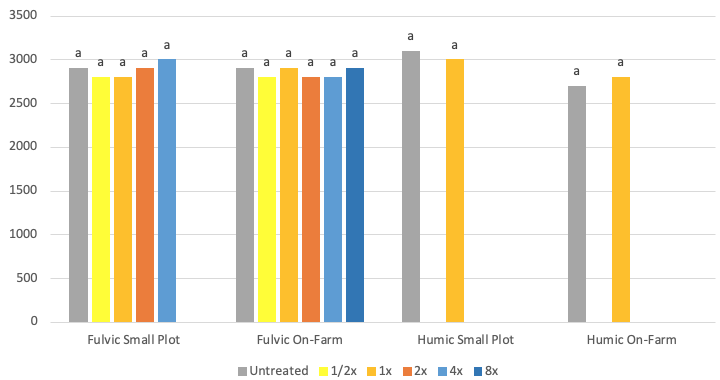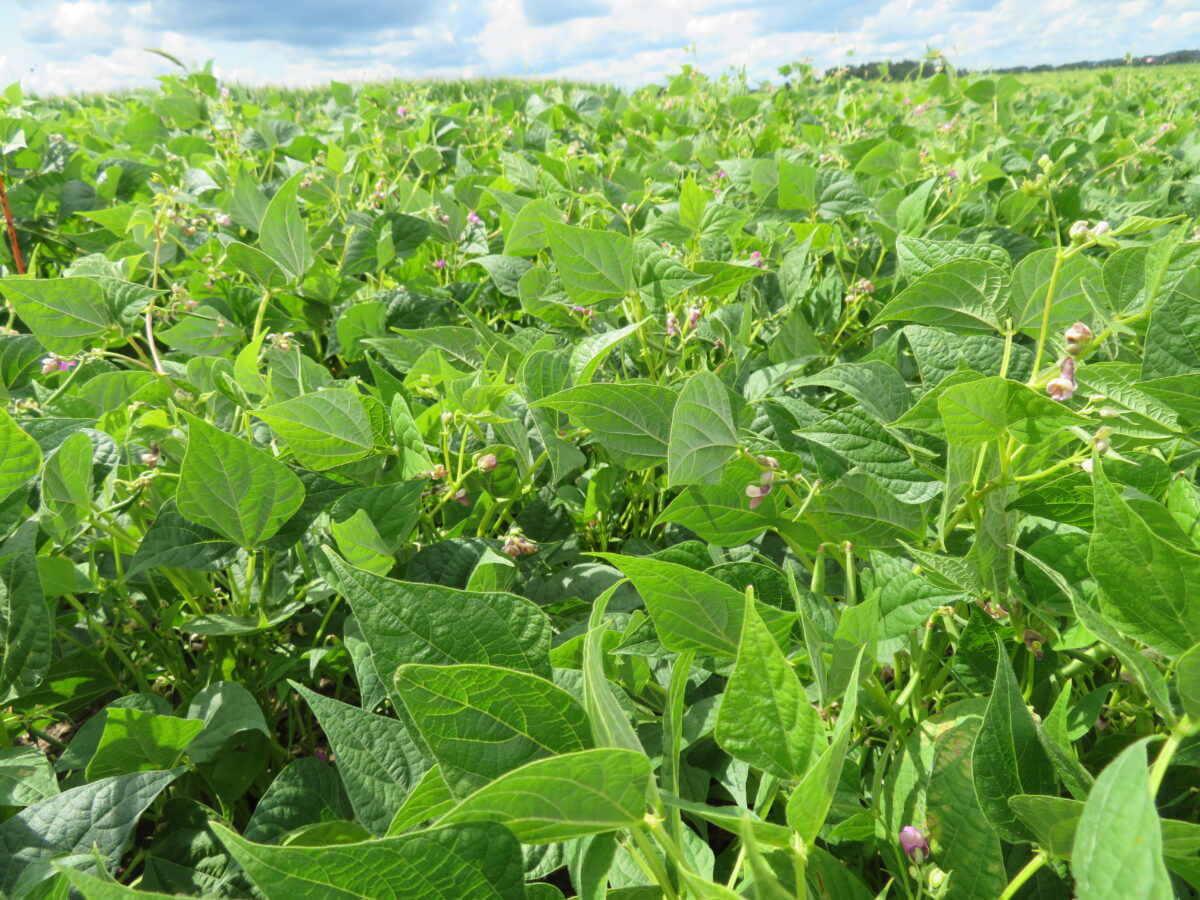Fulvic and humic acids are created when plant residue breaks down, and they are key parts of soil organic matter. In fertilizers, they have been shown to increase root growth, improve nutrient uptake, relieve stress and increase yield. The purpose of this study was to determine the response of dry bean to fertilizers containing fulvic and humic acid.
Fulvic acid fertilizer (LX7, MTS Environmental Inc, Centralia ON) was tested in eight small plot and 12 on-farm replicated studies, using black, cranberry, navy, kidney, adzuki and otebo market classes. Treatments included the label rate of 10 L/ha as well as 1/2x, 2x, 4x and 8x rates, with and without a starter fertilizer. Humic acid fertilizer (Plant XL, Alpha-Agri, Bluevale ON) was tested in eight small plot and seven on-farm replicated studies using the same market classes. A label rate of 2.5 L/ha was applied with and without a 6-24-6 starter fertilizer.

Bars within a group (fertilizer type and study site) with the same letter are not significantly different (P<0.05).
There were no differences in early season plant vigour, plant height at flowering or seed weight at harvest (data not shown). The untreated starter fertilizer treatment (22.5 L/ha of 6-24-6) had similar yield to the untreated control (data not shown). There were no differences in yield, even when the fulvic acid fertilizer was tested at 8x of the label rate. There were no differences in yield between cultivars, market classes, sites or years. This large data set with a total of 35 replicated studies should convince growers that fulvic and humic acid fertilizers give little real benefit to dry beans.
Originally published in Canadian Journal of Plant Science 2017. Volume 97. Pages 202-205. Revised July 2020 for drybeanagronomy.ca.
